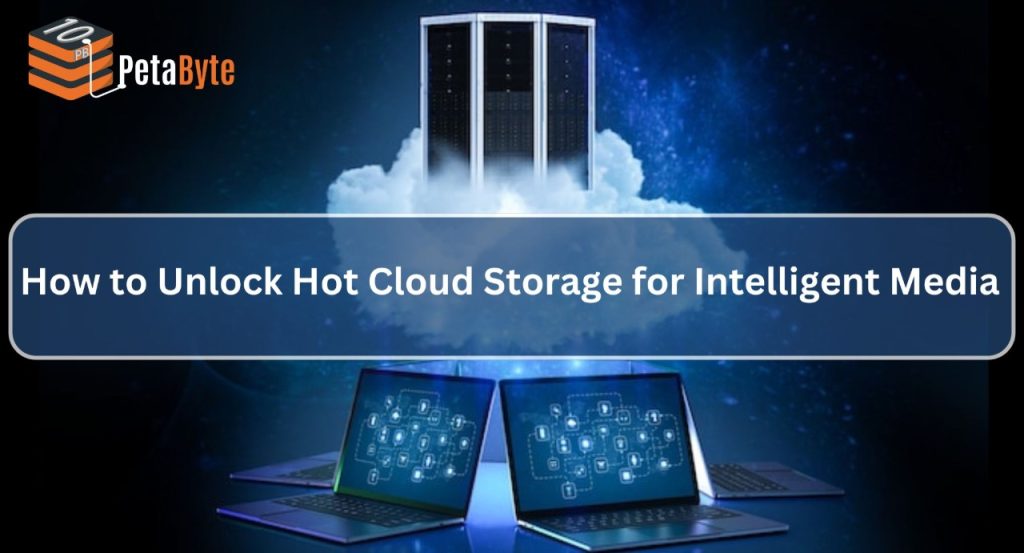Introduction
The media industry is experiencing an exceptional digital change, with content creators, broadcasters, and businesses managing broad amounts of high-resolution media assets. Moreover, efficiently storing, accessing, and distributing these assets is important for seamless operations. In addition, hot cloud storage is a game changer, which offers fast, inexpensive, and scalable cloud object storage solutions for intelligent media workflows.
In this blog, we’ll get to know the importance of cloud-based object storage in the media sector. Also, how it increases the workflows, and why organizations should use it to boost the potential of their intelligent media storage.
Understanding Hot Cloud Storage and Object Storage
A high-performance, always-available cloud storage approach aimed at scalability and real-time access is called “hot cloud storage.” Likewise, hot storage is ideal for media applications since it is built for regularly accessible data, in contrast to traditional cold storage, which is used for archiving.
An adaptable and scalable storage system that handles data as objects rather than blocks or files is object-based storage, which is the foundation of hot cloud storage. This enables media companies to effectively store and retrieve vast volumes of data.
Main Elements of Object-Based Storage:
- Scalability: This easily grows to handle increasing media content.
- Metadata tagging: It enhances file organization and searchability.
- Durability: This offers a high level of data redundancy to guard against loss.
- Cost-Effectiveness: This lowers expenses by removing the requirement for pricey on-premises infrastructure.
- Instant Accessibility: This offers media production and distribution with real-time access.
Why Media Companies Need Cloud Object Storage
Terabytes to petabytes of video, audio, and image data are handled by the media and entertainment sector. Traditional online file storage options are struggling to keep up with expanding data needs. Cloud object storage providers bridge the gap by providing storage infrastructure that is:
- Quick and Reliable Access
Hot cloud storage allows media teams to access and edit data in real time, without lag. This is crucial in video creation, live broadcasting, and post-production operations.
- Cost Optimization
On-premise storage needs a considerable upfront cost and ongoing maintenance. Media companies can significantly reduce storage expenses by utilizing cloud backup services for small businesses.
- Scalability of Large Media Libraries
As media archives expand, object storage provides endless scalability. Businesses can save raw footage, edited videos, and archived content without worrying about space.
- Data protection and security
Online backup storage solutions safeguard important media content from unintentional loss, cyber attacks, and natural disasters. Features like redundancy and encryption can help businesses safeguard their intellectual property.
- Smooth Combining AI and Machine Learning
AI-powered solutions can be connected with hot cloud storage to facilitate content recommendations, automated tagging, and intelligent indexing. This increases media asset management and searchability.
Comparison of Traditional vs. Hot Cloud Storage
The table that follows contrasts hot cloud storage with traditional storage, emphasizing the benefits of using cloud-based object storage for media workflows:


How to Unlock the Full Potential of Hot Cloud Storage for Intelligent Media
Step 1: Select a Reliable Cloud Object Storage Provider
Choosing the best object storage providers is crucial for peak performance. 10PB powered by NetForChoice provides an industry-leading cloud-based object storage solution specifically designed for media applications. It provides extremely fast rates for real-time streaming and editing.
- Enterprise-level security to protect media assets.
- Highly scalable storage for expanding media libraries.
- Pricing is reasonable, with no hidden costs.
Step 2: Establish a Hybrid Storage Model
Most media companies employ a hybrid storage strategy, which incorporates online backup storage and on-premise hardware. This provides the best performance while safeguarding sensitive information.
Step 3: Automate media asset management
Merging AI-driven media asset management solutions with cloud object storage. AI automation facilitates smart tagging of media assets.
- AI-driven automatic transcription of video/audio content.
- Personalized content suggestions for customized user experiences.
Step 4: Improve Cloud Backup Solutions
Use cloud backup solutions for small organizations to secure data redundancy and disaster recovery. This avoids media losses caused by hacks, system outages, or unintentional deletions.
Step 5: Leverage Intelligent Media Storage to Enhance Workflow Efficiency
Intelligent media storage facilitates smooth collaboration between content authors, editors, and distributors. In distributed media environments, attributes like real-time synchronization, versioning, and remote access raise productivity.
Benefits of Hot Cloud Storage for Intelligent Media

Conclusion
With increasing media consumption, companies need to implement innovative solutions to handle vast and affordability. By making it imperative for contemporary media workflows. By choosing 10PB powered by NetForChoice, companies can unleash smart media storage and accelerate their digital transformation with ease. Invest in media storage today and enjoy unparalleled efficiency with cloud-based object storage.

